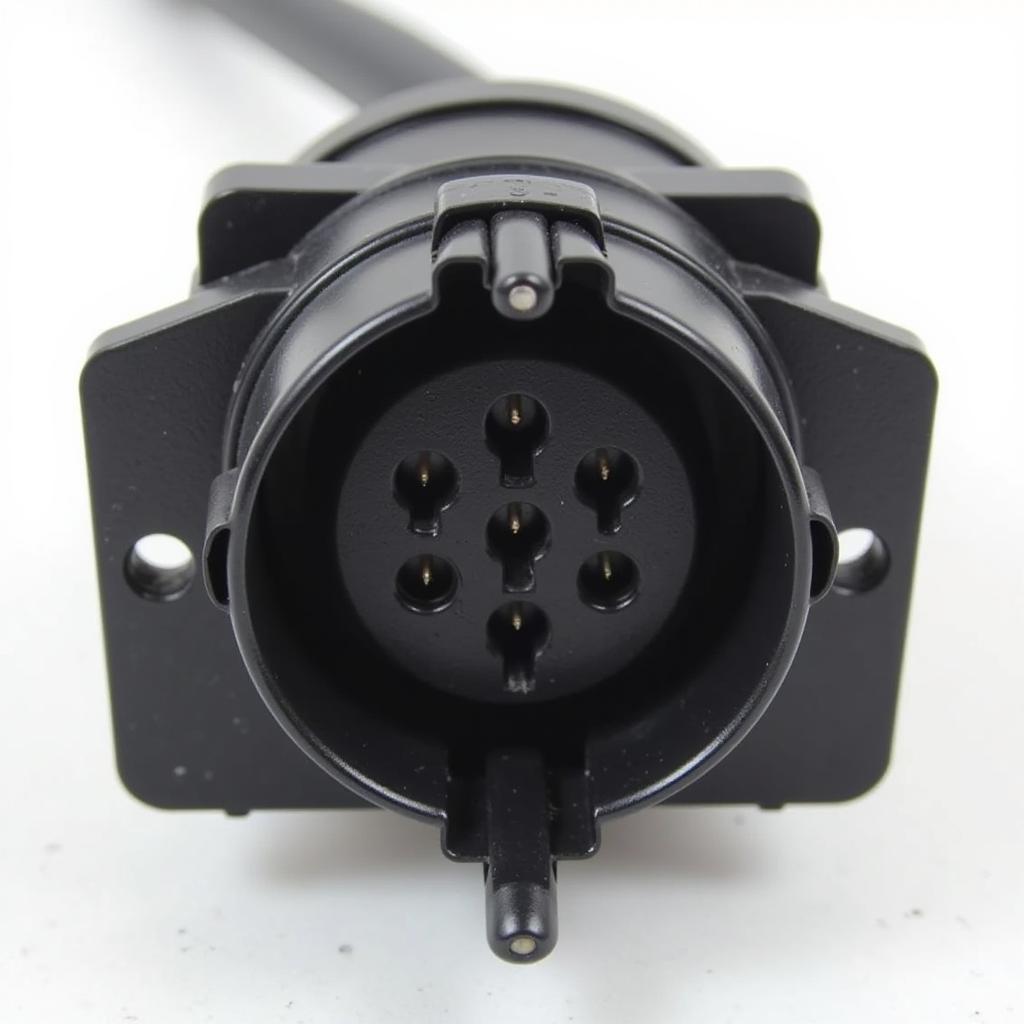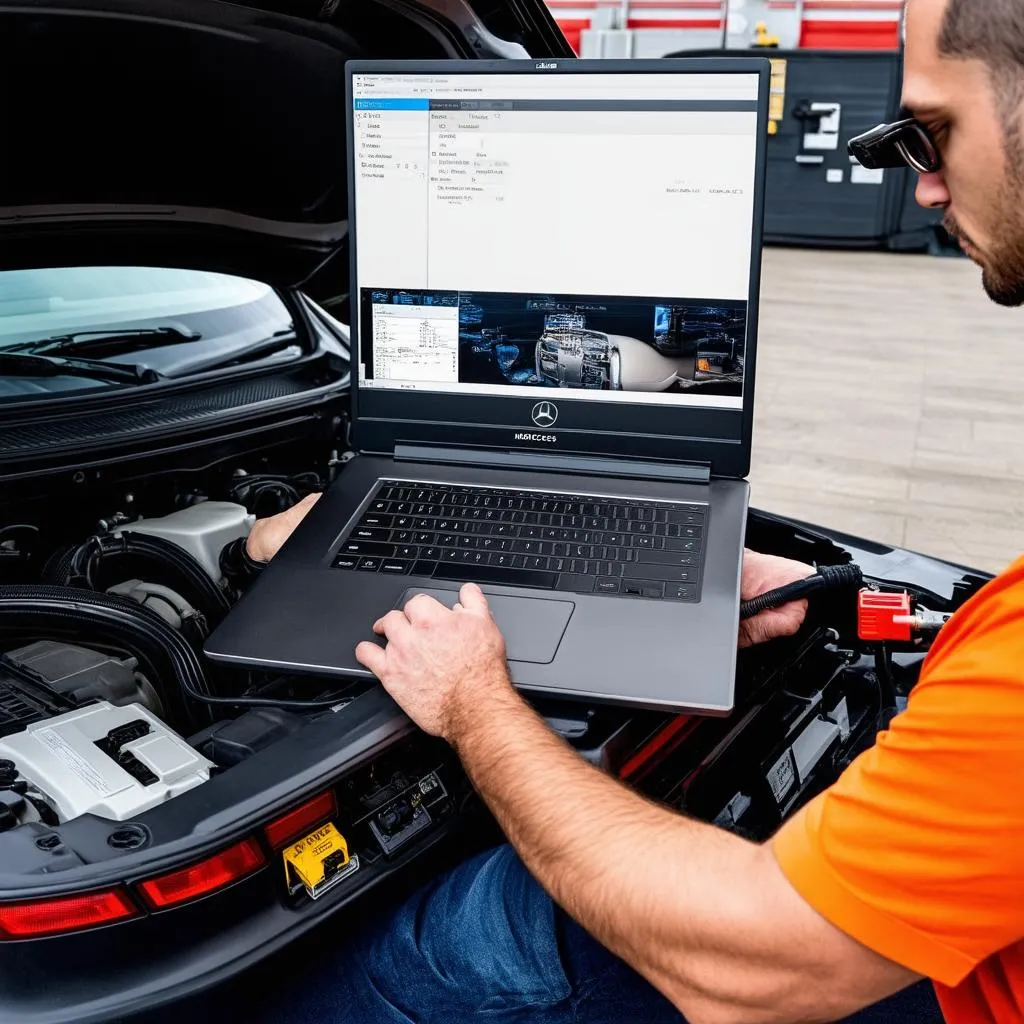Finding the diagnostic port on your 1995 Mercedes E320 can sometimes feel like searching for a hidden treasure. This article will guide you step-by-step to locate the OBD-I diagnostic port on your E320, allowing you to diagnose and troubleshoot any potential issues. Understanding its location is essential for DIY repairs or even when taking your car to a professional mechanic.
Locating the OBD-I Port on Your 1995 E320
Unlike later models with the standardized OBD-II port, the 1995 E320 uses the older OBD-I system. This means the connector and its location are different. Mercedes-Benz strategically placed the OBD-I diagnostic connector under the hood, typically on the driver’s side.
Specifically, you should look for a round, 8-pin connector housed within a black, rectangular diagnostic box. This box often has a flip-up cover for protection. It’s usually near the firewall or attached to the inner fender well. The diagnostic box might be labeled, but often it blends in with other components under the hood.
Common Issues and Troubleshooting Tips
Sometimes, the diagnostic box might be hidden behind other components, requiring you to carefully move them aside for access. A flashlight can be invaluable in this search. If you’re still unable to locate the port, consult your owner’s manual for a diagram or contact a Mercedes-Benz specialist. Remember, accurately diagnosing car problems relies on accessing the right port.
Why is Finding the Diagnostic Port Important?
Accessing the diagnostic port allows you to connect a diagnostic tool, often referred to as a scanner. This tool communicates with your car’s computer, retrieving diagnostic trouble codes (DTCs). These codes pinpoint specific issues, saving you time and money on unnecessary repairs. Whether it’s a check engine light, transmission problem, or ABS issue, the diagnostic port is your gateway to understanding what’s happening with your E320.
What if I Can’t Connect to the Diagnostic Port?
If you’re having trouble connecting to the port, ensure your diagnostic tool is compatible with the OBD-I system. 1995 was a transitional year, and some E320s might have a 38-pin connector under the dashboard instead. Check your owner’s manual for clarification. Corrosion or damaged pins can also prevent connection. Inspect the port carefully and clean it if necessary.
 Mercedes E320 OBD-I Diagnostic Connector and Pins
Mercedes E320 OBD-I Diagnostic Connector and Pins
How to Use the Diagnostic Port Effectively
Once you’ve located the port and connected your diagnostic tool, you can retrieve and interpret DTCs. Each code corresponds to a specific problem. Researching these codes can provide valuable insights into the issue’s severity and potential solutions. Remember, proper diagnosis is the first step towards efficient repairs.
Beyond the Diagnostic Port: Further Diagnostic Steps
While the diagnostic port offers initial insights, a thorough diagnosis often requires further investigation. Mechanical inspections, voltage tests, and other procedures might be necessary to pinpoint the root cause of the problem. Remember, the diagnostic port is a starting point, not the end-all solution.
Conclusion
Locating the diagnostic port on your 1995 Mercedes E320 is the first step in diagnosing and resolving any car troubles. By following these guidelines and using the right tools, you can confidently troubleshoot your vehicle and maintain its optimal performance. Knowing the 1995 Mercedes E320 diagnostic port location empowers you to take control of your car’s health. Remember to always consult your owner’s manual or seek professional help if needed.
FAQ
- Where is the diagnostic port on a 1995 Mercedes E320? It’s typically under the hood on the driver’s side, in a black box.
- What type of diagnostic port does a 1995 E320 have? It uses the OBD-I system, typically an 8-pin connector.
- What if I can’t find the diagnostic port? Check your owner’s manual or consult a Mercedes specialist.
- Why is the diagnostic port important? It allows you to retrieve diagnostic trouble codes (DTCs) to identify problems.
- What if my scanner doesn’t connect? Ensure it’s OBD-I compatible and check for damaged pins or a 38-pin connector.
- What do I do after retrieving DTCs? Research the codes to understand the problem and potential solutions.
- Is the diagnostic port the only diagnostic tool needed? No, further mechanical inspections and tests might be necessary.
Need support? Contact us via Whatsapp: +1 (641) 206-8880, Email: CARDIAGTECH[email protected] Or visit us at: 276 Reock St, City of Orange, NJ 07050, United States. We have a 24/7 customer support team.


